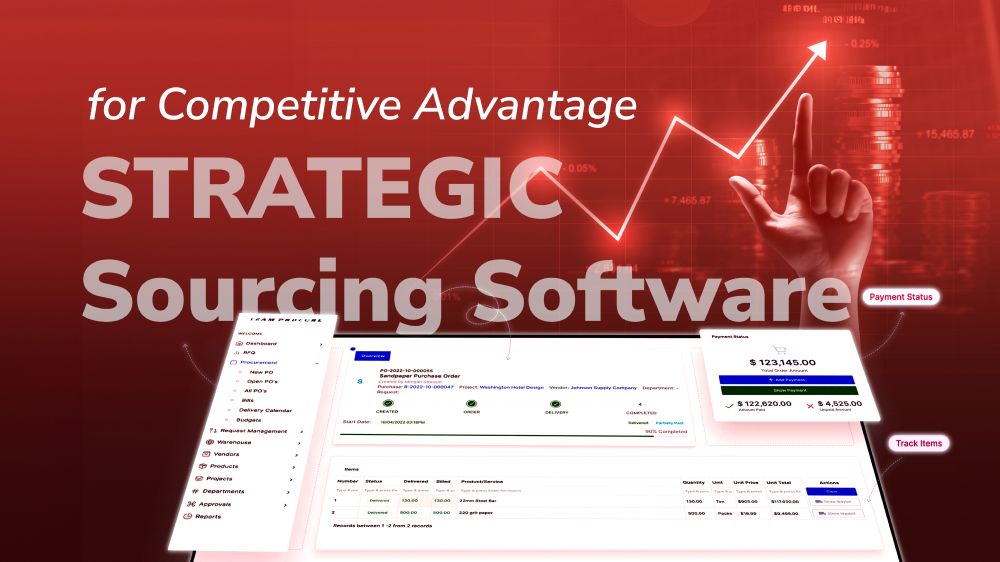IT Vendor Management Guide: Definition, Benefits & How to Do It Right

Content Map
More chaptersOutsourcing has grown by speed to become a prevalent business practice in the IT industry. According to the 2019 report by ISG Research, 92% of G2000 companies use some form of IT outsourcing services, ranging from software outsourcing, dedicated teams, IT staff augmentation, and so forth. Surprisingly, only a few invest in a proper strategy to manage vendors, which is especially relevant for startups or burgeoning companies.
Additionally, in 2019, the Third Party Governance & Oversight 2019 Survey indicated that 35% of organizations work with more than 1,000 third-party service providers, while nearly half of those work with over 10,000 vendors. This means any business that outsources will have to deal with at least one IT outsourcing service vendor or even juggle multiple ones simultaneously.
For those coming unprepared, managing IT vendors and their services will not only be a daunting but also intimidating task. Without a proper plan to manage your outsourcing vendors throughout their lifecycle, you are lost and more likely to put your vendor relationships at stake, as do your outsourcing endeavor. Hence, it is essential for business owners to be mindful of the possible risks that come with not managing IT vendors correctly. In this guide, let’s uncover what you need to know about an efficient IT vendor management process and how to create your own.
What Is IT Vendor Management?

In the simplest terms, IT vendor management is a broad term referring to the all-inclusive process of monitoring and maintaining relationships with vendors. In some cases, this term can be used interchangeably with software vendor management or outsourcing vendor management.
It involves setting expectations, defining responsibilities, evaluating vendor performance, managing budgets, fostering collaboration, and ensuring regulatory compliance. The primary business objectives of IT vendor management are to ensure that service providers are meeting their contractual obligations, performing according to the agreed standards, and delivering the expected value.
Seven Key Aspects in Managing Vendor Relationships

A strategy involves a number of vendor management activities that can be categorized into seven areas as below:
Vendor Selection
This stage includes establishing clear criteria for selecting IT vendors. It involves defining each party’s expectations, roles, responsibilities, rights, and liabilities to ensure that both parties are adequately protected and aligned with their goals. Settling down with the right outsourcing partner is always the critical starting point that can make or break the entire journey, so selecting vendors should always be handled with utmost care.
Contract Negotiation
At this stage, both parties will negotiate the mutually beneficial contract terms and conditions of their contract. This means that all key stakeholders must thoroughly understand what is included in the outsourcing contract as it defines both parties’ expectations on product delivery, service level agreement (SLA), and budget control. It can be tedious due to its complex nature, but it is crucial to make sure that both parties are satisfied with their understanding of the services. Once this step is completed, both parties should sign the agreements and adhere to them throughout the life cycle of their relationship.
Vendor Onboarding
When the vendor selection process is done and the contract is signed, it is time to move on to onboarding. This stage consists of activities such as setting up collaboration tools, developing IT processes and procedures, conducting security reviews and audits, etc. The goal of the vendor onboarding process here is to ensure that both parties are prepared for successful service delivery. And both parties should work together to ensure that all operational and administrative tasks are completed correctly.
Contract Management
The contract management process involves monitoring and managing the outsourced vendor relationships to ensure that contractual obligations are fulfilled throughout the duration of their partnership. This includes reviewing service-level agreements, tracking progress, evaluating performance metrics, and updating the contracts as needed. It is crucial to keep track of these aspects in order to ensure that the vendor is meeting their contractual obligations and to ensure that both parties are adhering to the agreed terms.
Vendor Performance Management
At this point, businesses evaluate vendor performance by measuring the effectiveness and efficiency of services rendered, which can be done manually or through automated vendor management systems that help companies to track key performance indicators (KPIs) and generate reports for vendor compliance management, quality of service, cost optimization efforts, etc.
Through consistent analysis of vendors’ performance data, organizations not only can ensure service excellence but also can identify areas where improvements are necessary or when a new vendor should be considered for better results. It also helps organizations to proactively manage their vendors so that they can meet their desired objectives and ensure that the services provided are in line with their expectations.
Vendor Relationship Management
The overall goal of this is to nurture and cultivate strong communication and collaboration with vendors to ensure long-term, mutually beneficial relationships. This is also the key point in managing remote service providers or development teams. It involves setting up a communication channel between the two parties, establishing mutual trust and respect, resolving conflicts in a timely manner, and providing feedback for continuous improvement. It also includes developing strategies for mitigating any risks associated with outsourcing relationships and creating an environment conducive to open and constructive dialogue.
Vendor Data Management
As its namesake, this emphasizes the data aspect of an outsourcing partnership. This involves collecting, storing, and reporting data from vendors. It is mainly concerned with capturing and maintaining accurate information about vendors and their services, such as performance metrics, contact details, service level agreements, contract terms & conditions, etc. With the aid of vendor management services and software, organizations can manage their vendor data centrally, streamline the onboarding process, and maintain an organized database of their partners.
Risk Management
Outsourcing relationships come with certain risks, such as compliance, security, and financial issues. The process of risk management involves assessing the level of risk associated with working with an outsourced vendor, identifying potential risks that could arise, and developing strategies for mitigating them.
It is important for organizations to conduct thorough due diligence when selecting vendors and monitor the performance of those vendors to identify any potential risks that may arise. Additionally, businesses should develop a risk management plan in order to mitigate these risks and provide clear guidelines on how they should be addressed if they do arise.
The Importance of an Efficient Vendor Management Process

Are you underestimating how you manage your IT vendors? The following benefits will change your mind. A successful vendor management process is not one-off work but an ongoing process that requires careful planning and execution. Also, it indeed costs you much effort and resources to maintain an efficient vendor management lifecycle. But the rewards you gain from it are worth the investment.
Reducing Vendor-related Risks
This is one of the most apparent vendor management benefits you can see. When outsourcing IT needs to third-party companies, there may be risks and challenges that you need to address, such as lack of control, compliance issues, and so much more to come.
You will be better at vendor selection with a crystal-clear strategy in hand, and you stand a better chance of finding the right vendors. And you know exactly what and how to put everything in the correct order to collaborate with your partners and boost the quality of service.
By having an effective vendor management system in place, you can minimize and mitigate any potential risks by monitoring vendors’ performance and making sure that they meet the quality of service expected from them.
Time- and Cost-savings
One of the biggest concerns business owners usually has in mind when working with external companies is cost-related issues. Basically, outsourcing is a good way to cut costs in different ways, and fortunately, you are able to maximize those economic effects if you manage your supplier relationships well enough.
With a well-planned strategy and automated systems in place, organizations can streamline all the procedures involved in finding, negotiating with, and monitoring vendors throughout the lifecycle. This helps to ensure the consistency of data and reduce manual effort by automating certain processes like vendor performance tracking or auditing. Additionally, it helps businesses to identify potential areas where cost savings can be achieved in order to optimize their outsourcing spend. This way, you can control costs better and make certain that you are getting the best value for your money. Last but not least, a good relationship with your partner can buy you opportunities to negotiate better rates and other privileges.
Enhancing Service Quality
Maintaining strong vendor relationships enables organizations to drive service quality and performance at the utmost level. The vendors you work with are essential partners in achieving your business objectives, so it is important to ensure that they have the necessary resources and skills to deliver the services you need. By setting up clear SLAs with measurable KPIs and monitoring their performance, businesses can identify any areas where their vendors are not meeting the required standards and take corrective actions in time. This ultimately leads to improved customer satisfaction and better business outcomes.
Lowering the Rate of Vendor Churn
Simply put, vendor churn is the rate at which a client discontinues the partnership with an IT vendor. This is an issue of the supply chain which can be costly for businesses. A high rate of vendor churn means there is a high turnover of suppliers, and it can lead to inefficiencies, missed deadlines, and other issues that can have an impact on your bottom line.
By having an effective vendor management system in place, you can ensure both parties get the best out of each other and avoid unnecessary churn. This means that you can keep your vendors for longer and avoid the hassle of searching for new partners with the same quality of services. In this way, you can develop and sustain strong relationships with your vendors and shun the likelihood of them leaving or changing their agreement terms.
Increasing Visibility and Control
A structured approach for managing suppliers gives organizations increased visibility into their outsourced activities and allows them to monitor their compliance with internal and external regulations. This is critical in ensuring the quality of service and providing oversight over the vendor’s activities. Additionally, it helps businesses to get an understanding of their vendors’ performance to identify potential areas for improvement and ensure that they are continuously meeting customer requirements.
How to Create a Well-thought IT Vendor Management Process

Now that you have enough drivers to begin building your process, don’t you?
Managing relationships with partners is a kind of art, and it requires much effort to master. Fortunately, you can craft a successful IT vendor management process of your own by following these best practices:
Clarify Your Everything Before Starting Vendor Sourcing
In almost every outsourcing guide, the first best practice you are told about is to define what your organization needs, and it is also true when planning a management process as well. This includes the type of services you need, how frequently they are required, and other parameters that will help you determine how to evaluate vendors and make fair comparisons between them. This practice will help you to identify the best partners for your business while avoiding the risks associated with unqualified vendors or supply chain disruption.
Set Up Clear SLAs & KPIs
Setting up well-defined Service Level Agreements (SLAs) is essential in order to ensure that both parties are clear about what they should be delivered. Apart from this, it’s also important to define Key Performance Indicators (KPIs), which will be used to measure the performance of the supplier over time. This information should then be shared with the vendor prior to signing any agreements.
Leverage the Power of the Vendor Management Technology
There are a lot of vendor management software solutions available. The best vendor management system can be a big aid in your strategy. Utilizing a comprehensive platform will help you to better manage all your suppliers in one place and ensure that every team member has access to the necessary information about the vendor’s performance and activities. This also allows for better communication between teams and vendors, which is essential for successful partnerships.
Foster Seamless Communication
It is vital to foster a culture of open communication to ensure that both the vendor and you are on the same page. This means that during the vendor management process, each party should be given an opportunity to discuss issues or concerns they may have. This can help to avoid problems caused by miscommunication in the future.
Establish Emergency Plans in Play
No matter how well-prepared you are, there will always be a chance of something going wrong. Therefore, it is essential to have an emergency plan in place that can help minimize the impact of unexpected situations and ensure smooth business continuity without disruption. This should include a plan for dealing with potential risks and liabilities and possible alternatives if something goes wrong.
Conduct Vendor Management Audits
Finally, it is critical to conduct regular audits of vendors to ensure that they are meeting their contractual obligations and that no irregularities are occurring. During the audit process, all areas of vendor management should be checked, including performance, compliance with company policies and procedures, and customer service. These audits should be conducted in a timely manner so that any areas of non-compliance can be identified as soon as possible.







